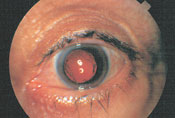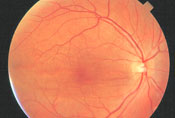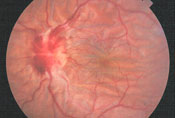Minor improvements make a major difference in trabeculectomy results
Changes such as the use of a larger filter area have improved the results of the procedure and patients’ perception of it, surgeon says.
Click Here to Manage Email Alerts
Small, incremental improvements in trabeculectomy have made a big difference in the way patients experience the surgery, in addition to improving surgical outcomes, according to Peng T. Khaw, PhD, FRCS, FRCOphth.
Dr. Khaw reviewed recent advances in trabeculectomy technique in a presentation at the Glaucoma Subspecialty Day at the American Academy of Ophthalmology meeting in Chicago.
“There have been many evolutionary improvements in trabeculectomy, but these have made very significant changes to the way our patients perceive surgery,” Dr. Shaw said. “These techniques are simple. These are techniques that you can all do tomorrow in your clinical practice, and excellent results are possible, with safer control and safe lowering of pressure for patients in the long run.”
Among the changes he discussed were the use of positive pressure infusion during surgery, the creation of a larger bleb, improved use of antimetabolites and the use of adjustable sutures.
“What we’ve learned is that much larger areas of treatment have had an absolutely profound effect on the morphology and ultimately, the comfort and safety of the operation for our patients,” Dr. Khaw said. “Small things like using a clamp to protect the conjunctiva, polyvinyl alcohol sponges rather than methylcellulose ones, which don’t shred, makes a big difference in terms of your surgery.”
These changes have been driven in part by patient expectations, Dr. Khaw said. Patients want to be able to see after surgery and to be comfortable. He said changes such as adjustable sutures, which help to prevent hypotony, can allow patients to maintain 20/20 vision postoperatively. Buried corneal sutures for conjunctival closure have also increased comfort for patients postoperatively.
“The patients are much more comfortable because they don’t have exposed nylon underneath their lids,” he said.
Possible complications of hypotony after trabeculectomy
Images: The Atlas of Ophthalmology Photo CD, SLACK Incorporated. |
Use of infusion
Dr. Khaw said surgeons are learning that they do not need a large trabeculectomy opening to achieve good aqueous outflow. Also, a smaller opening reduces the amount of postoperative induced astigmatism, he said.
Controlling flow with an infusion line allows better control of IOP both intraoperatively and postoperatively, Dr. Khaw said. An infusion, in combination with the smaller trabeculectomy hole, allows the surgeon to be more precise with placement of flap sutures, he said.
“By having an infusion during some of the more difficult cases, we are able to control where we direct the flow by suture placement. We’ve also learned to try to divert aqueous backward, not to cut your incision right to the limbus, so that you force aqueous sideways and backwards, which leads to a much more diffuse bleb,” he said.
Application of mitomycin over a larger area has also helped in achieving a diffuse bleb, he said. Formerly common cystic blebs have now been replaced with more healthy looking diffuse blebs.
Suture improvements
Use of adjustable sutures has allowed surgeons to achieve better postoperative IOP control, Dr. Khaw said.
“You put an appropriate number of these releasable sutures in so that you can control the pressure,” he said. “Generally speaking, most of the patients have pressure in the low 20s [mm Hg] on the first postoperative day, and you can bring these pressures down slowly … over the course of weeks or months to the target pressure, without experiencing the potentially sight-threatening problems of choroidal effusions and choroidal hemorrhages.”
These changes have been incorporated by Dr. Khaw into a system of trabeculectomy known as the Moorfields Safer Surgery System. Videos and further information on these techniques can be downloaded from www.ucl.ac.uk/ioo/research/khawlibrary.htm.
For Your Information:
- Peng T. Khaw, PhD, FRCS, FRCOphth, is professor of glaucoma and ocular healing as well as director of the ocular repair and regeneration biology unit in the Division of Pathology and Glaucoma at the Institute of Ophthalmology, University College London, and Moorfields Eye Hospital. Dr. Khaw can be reached at +44-02-076086887; e-mail: p.khaw@ucl.ac.uk.
- Erin L. Boyle is an OSN Staff Writer who covers all aspects of ophthalmology.



